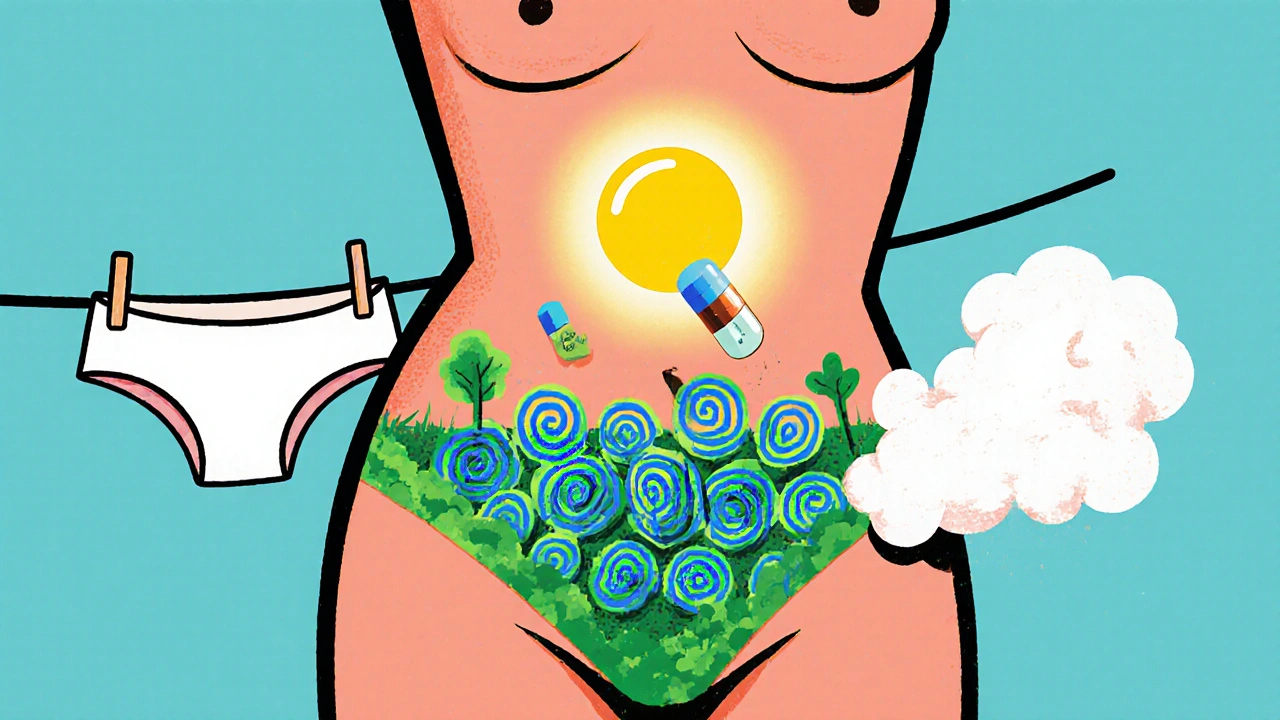Prevent Yeast Infection: Simple Ways to Stop It Before It Starts
When you think about yeast infection, a common fungal infection caused mainly by Candida albicans that affects the vagina, mouth, or skin folds. Also known as candidiasis, it’s not rare—it affects 75% of women at least once in their lifetime. But most people don’t realize that preventing it isn’t about fancy products or extreme hygiene. It’s about understanding what triggers it—and stopping those triggers before they start.
Yeast infections happen when the balance of microbes in your body gets thrown off. Antibiotics, sugar-heavy diets, tight synthetic underwear, and even stress can all tip the scales. You don’t need to avoid all sugar forever, but cutting back on sweets and refined carbs can make a real difference. Same with antibiotics: if you’re on them, talk to your doctor about probiotics. Not just any probiotic—look for strains like Lactobacillus rhamnosus and Lactobacillus reuteri. They’re the ones shown in studies to help keep Candida in check.
Moisture is another big one. Sweating in workout clothes for hours? Wearing damp swimsuits? That’s yeast’s favorite vacation spot. Cotton underwear and changing out of wet clothes fast aren’t old wives’ tales—they’re clinical recommendations. And skip the douches, scented sprays, and bubble baths. Your vagina cleans itself. You don’t need to help.
Some people swear by yogurt or garlic, and while they might help a little, they’re not replacements for proven treatments. If you’ve had a yeast infection before, you know the itch, the burning, the thick white discharge. But if you keep getting them—more than four times a year—that’s not normal. That’s recurrent candidiasis, and it needs a different approach. Your doctor might suggest a longer antifungal course or check for diabetes, since high blood sugar feeds yeast.
Men get yeast infections too, especially if they’re uncircumcised or have diabetes. It shows up as redness, itching, or a rash on the penis. It’s often passed back and forth during sex, so partners might need treatment too—even if they don’t have symptoms.
And here’s something most people miss: your skin folds matter. Under your breasts, in your armpits, between your toes—anywhere skin rubs together and stays damp is a risk zone. Keep those areas dry. Use talc-free powder if needed. Don’t ignore a rash that won’t go away—it could be yeast, not just irritation.
What you’ll find in the posts below are real, no-fluff comparisons of antifungal creams like ketoconazole cream, a topical antifungal used for skin infections including yeast, versus alternatives like clotrimazole and terbinafine. You’ll also see how drug interactions, how certain medications and supplements can affect each other might make yeast infections worse, and why some people keep getting them even after treatment. No guesswork. Just clear, practical info based on what actually works.

How to Prevent and Treat Yeast Infections Caused by Antibiotics
Antibiotics can trigger yeast infections by killing off protective bacteria. Learn how to prevent and treat them with proven strategies like probiotics, antifungals, and lifestyle changes - without waiting for symptoms to start.
